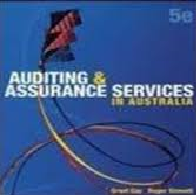Auditing and Assurance Ethics Handbook Order Instructions: There is a picture of the question that will be sent via email. kindly focus on point b and c of the question. also, please prepare the report taking into consideration “auditing” and auditing and assurance ethics handbook.
SAMPLE ANSWER
Auditing and Assurance Ethics Handbook Introduction
Auditor’s major objective is to assess and identify risks that may present material misstatements that may facilitate errors or lead to fraud on the financial statement or assertion levels.

Through understanding the company’s entity together with its environment and internal control systems, suitable responses to risks can be designed to limit material misstatements. Significant risks are the assessed risks in material misstatement that have been identified by the auditor that may require special consideration during the audit exercise (International Standards on Auditing 315, 2009).
The risks on financial statements are associated with the accounting records and the supporting information or documents that accompany the financial statements as evidence of transaction or earnings receipt (Bernanke, 2010). The process of correcting errors and how the correct information is transferred to the general ledger makes the process susceptible to assessable risks.
The method used by the information system to capture transactions and events is very significant to the accuracy of the financial statements. The reporting process and the system of financial statement’s preparation including all the estimates, assumptions and disclosures together with the journal entries are exposed to risks of completeness and inaccuracy (International Standards on Auditing 315, 2009).
The other risks on the classes of specific accounts stem from the communication between management and the governance team. External communication between the company and the industry regulators also exposes the company to risks of miscommunication and common errors.
The significant risks that can be related to financial statements are;
- Businesses in countries that are economically unstable or countries that have experienced huge currency devaluation.
- Components of internal controls
- Complex alliance and businesses that are likely to be sold predisposes the company to assessable risks.
- Lack of clear policies on valuation of some assets
- New accounting applications and rules
Risks associated with specific account levels are;
- Accounts that have specific litigation that are pending in court or other contingent liability.
- Past misstatements and accounts that have a history of errors.
- Intercompany transactions and development of new products and research activities.
- Huge differences between past accounting records without any logical reasons for instance the wide differences in revenues between the audited and unaudited in TNO’s accounts for 2013 and 2014 respectively.
- Other current assets and the increase in secured bank loans.
- Net income and the decrease in rental income
- Decrease in provision and the increase deferred development expenditure.
The above risks have been identified as a result of careful evaluation and thorough scrutiny of the financial statements that have been presented in line with the auditing standards and guidelines (Cooper, 2005).
Supporting documents confirms the authenticity of the transactions involved and they also provide evidence that the allege transaction took place at a particular date and the cost or earnings have been entered correctly in the financial books (International Standards on Auditing 315, 2009).
The policies on valuation of noncurrent assets present a big risk on the management’s reliance on the director’s valuation expertise as there no documentary evidence or policy guideline on the valuation exercise and investments policies (European Commission, 2009).
The operating environment is also not stated but assuming its operating in the US, the economic risks must be considered and its investment options must also be weighed. The collapse of giant financial institutions in the year 2008/09 brought a lot of companies to near bankruptcies predicament because of the loss suffered during the economic crisis during that period (D’Arcy, 2009).
The sudden increase in debts poses another risk to the business as it’s not clear why the funds were required (Lang & Jagtiani, 2010). These have been revealed by the ratios. For example, the ratio of debts to total assets is almost 50% and the current ratios are slightly below the average of 2:1. The current ratios are 1.91 and 1.54 for the years 2013 and 2014 respectively.
The major audit materiality would be largely based on the governance of the financial statements and the effectiveness of the internal control system which should take about 50% of the main audit work as the director’s management system is not very transparent and the control structures seem to be weak as per the notes presented in the case sturdy.
Auditing and Assurance Ethics Handbook References
Bernanke, B. (2010) Lessons from the failure of Lehman Brothers, retrieved May 29, 2012 from http://www.federalreserve.gov/newsevents/testimony/bernanke20100420a.htm.
Cooper, J. (2005). Financial Statement Fraud: Corporate Crime of the 21st Century. Retrieved February 11, 2012 from
http://www.asic.gov.au/asic/pdflib.nsf/LookupByFileName/AICD_speech_080605.pdf/$file/
D’Arcy, C. (2009). Why Lehman Brothers collapsed, retrieved May 11, 2012 from http://www.lovemoney.com/news/the-economy-politics-and-your-job/the-economy/3909/why-lehman-brothers-collapsed.
European Commission. (2009) Ensuring efficient, safe and sound derivatives markets, retrieved from www.ise.com/asset/files/articles/credit_crisis_Final_101118.pdf
International Standards on Auditing 315 (2009) Identifying and Assessing the Risks of Material misstatements through Understanding the Entity and its Environment Retrieved October 13, 2015 from http://aasc.org.ph/downloads/ISA/publications/PDFs/a017-2010-iaasb-handbook-isa-315.pdf
Lang, W. W. & Jagtiani, J. (2010) The Mortgage and Financial Crises: The Role
of Credit Risk Management and Corporate Governance. Atlantic Economic Journal, Retrieved February 03, 2011 from http://fic.wharton.upenn.edu/fic/papers/10/10-12.pdf.




